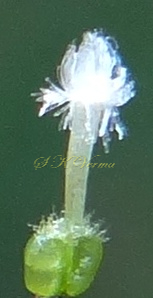CALLISIA
Callisia
Loefl., Iter Hispan. 305. 1758; Fl. China @ eFloras.org 24: 38; Fl. North Amer. @ eFloras.org vol. 22.
Perennial, rarely annual herbs. Rhizome absent. Roots thin, rarely tuberous. Stems prostrate or decumbent. Leaves distichous or spirally arranged; blades sessile. Inflorescence of paired or aggregated (sometimes solitary), sessile dense cincinni (scorpoid cymes) terminally or in axils of distal leaves; cymes sessile, contracted, umbel-like subtended by bracts, bracts inconspicuous; involucral bracts not spathe-like; pedicels very short or well-developed. Flowers bisexual, sometimes additionally unisexual flowers also present, actinomorphic, hypogynous. Sepals 2 or 3, free, subequal. Petals 2 or 3, free, equal, lanceolate, not clawed, white, pink or rose. Stamens (1-3 or) 6, all fertile, equal, rarely 1 or more becoming staminodes; filaments glabrous or bearded; anther thecae rounded, longitudinally dehiscent, connectives broad and square, triangular or oblong, rarely narrow. Ovary oblong, subtrigonous, 2- or 3-locular, ovules (1-)2 per loculus, 1-seriate. Capsules 2 or 3-locular, 2 or 3-valved. Seeds (1 or) 2 or 3 per valve, shortly cylindric, trigonous, rugose or radiate striate; hilum orbicular, minute.
19 species
Callisia repens
Callisia repens
(Jacq.) L., Sp. Pl., ed. 2: 62. 1762; Fl. China @ eFloras.org 24: 39; Fl. North Amer. @ eFloras.org vol. 22; Halapanthus repens Jacq., Enum. Syst. Pl. 12.1760.
Perennial herb. Stems prostrate and ascending, forming mats, much branched, nodes and internodes distinct, internodes pubescent, rooting at nodes. Leaves distichous, gradually becoming smaller distally along flowering stems; leaf base clasping, leaf sheaths loose, sparsely pilose; leaf blade ovate to lanceolate or lanceolate-oblong, 1-4 cm x 0.6-1.2 cm, glabrous, margin scabrid, apex acute to shortly acuminate; distal leaves erect, becoming loosely tubular encircling the inflorescence, 6 mm x 10 mm. Inflorescence of paired (sometimes solitary) sessile, dense cincinni (scorpoid cymes) terminally or in axils of distal leaves, cymes 4-6-flowered, subtended by non-spathaceous bracts, less than 1 cm long. Flowers bisexual, female and sometimes male, actinomorphic, hypogynous, subsessile ( pedicel +/- 3.5 mm long), ca. 1 cm long. Sepals 3, free, subequal, 3.5-4.5 mm long, green, erect, linear-oblong, hirsute along midvein, margin scarious. Petals 3, free, 4-5 mm x 1.5-2 mm, white, lanceolate, apex usually reflexed. Stamens 6, free; filaments filiform, long exserted, ca. 7 mm long, glabrous; anthers bithecous, ca. 1 mm long, thecae rounded, connective broadly deltoid or irregularly oblong, apex 2-3 dentate, dehiscence transverse. Ovary oblong, 1-1.5 mm long, subtrigonous, pilose at apex, 2-3-locular, 2 ovules per loculus; style ca. 4 mm long, filiform; stigma penicillate (bearing tuft of hairs).
Capsule oblong, ca. 1.5 mm long, 2-locular, 2-valved; seeds 2 per valve, brown, ca. 1 mm, rugose. (Capsules not observed)
Common Names: Creeping Inch Plant, Basket Plant, Itsy-Bitsy Inch Plant, Jellybean Plant, Little Jewel, Tiny Buttons, Turtle Vine
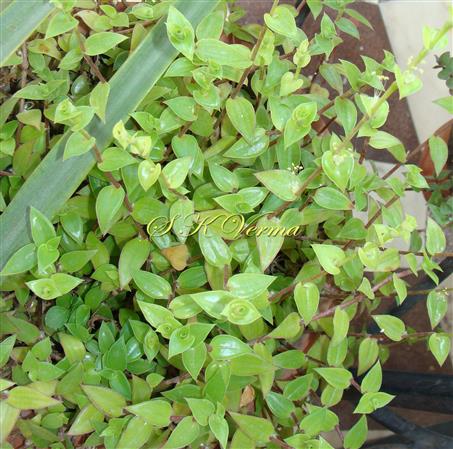
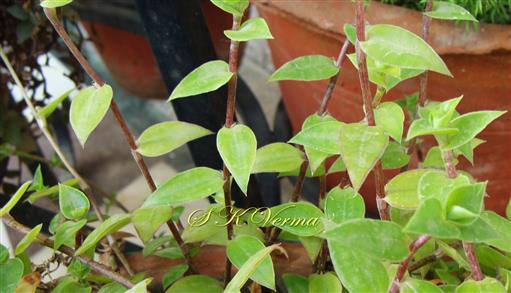
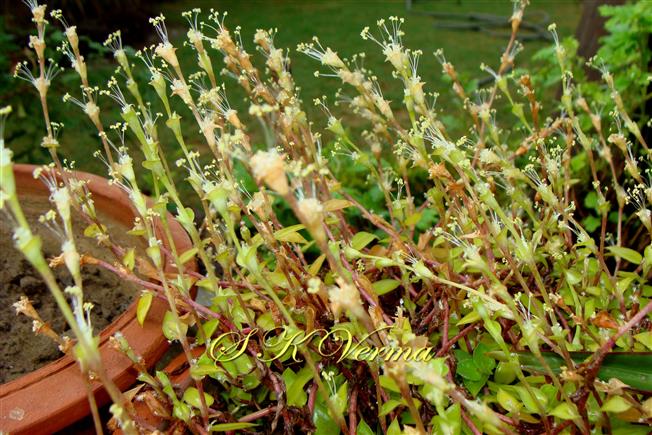
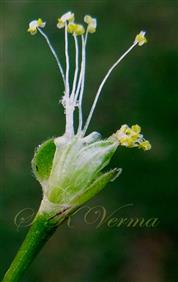
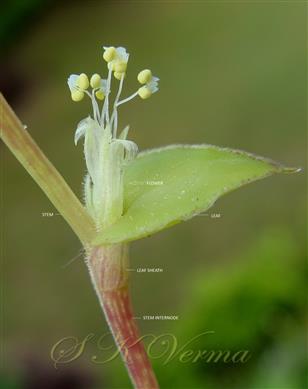
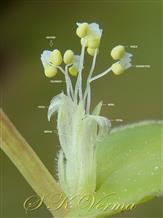
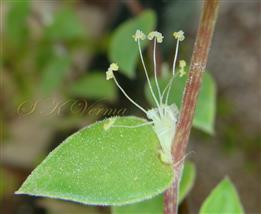
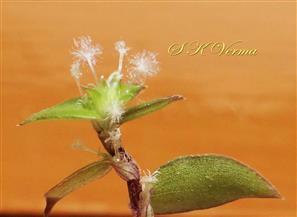
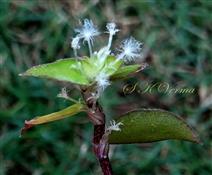


-DSC01631.jpg)











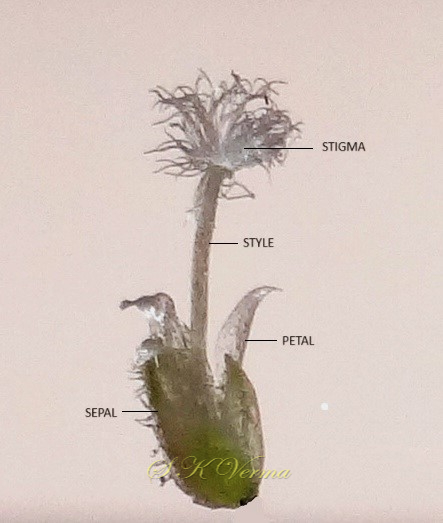
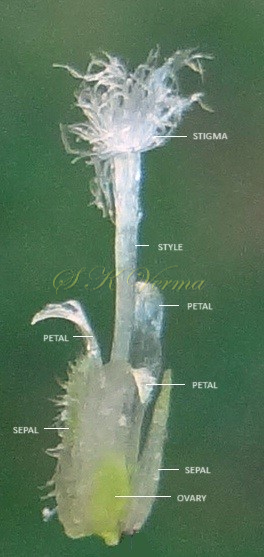
-DSC01631.jpg)
